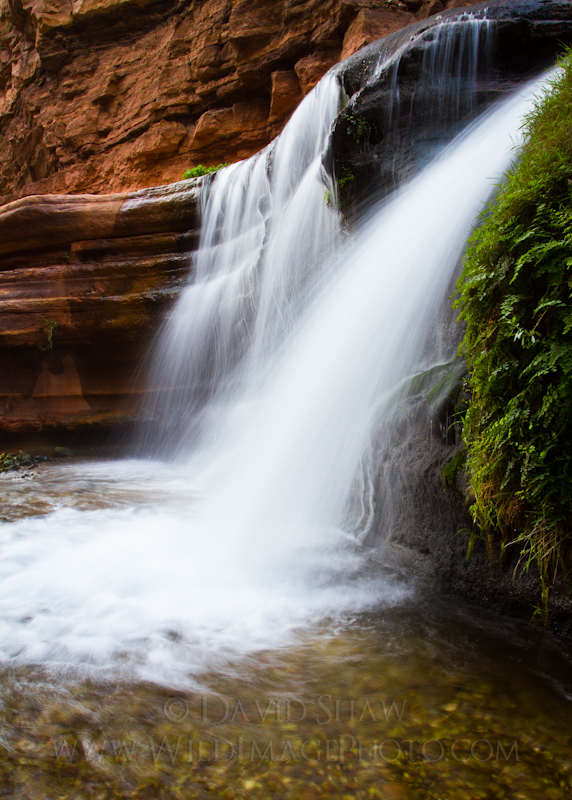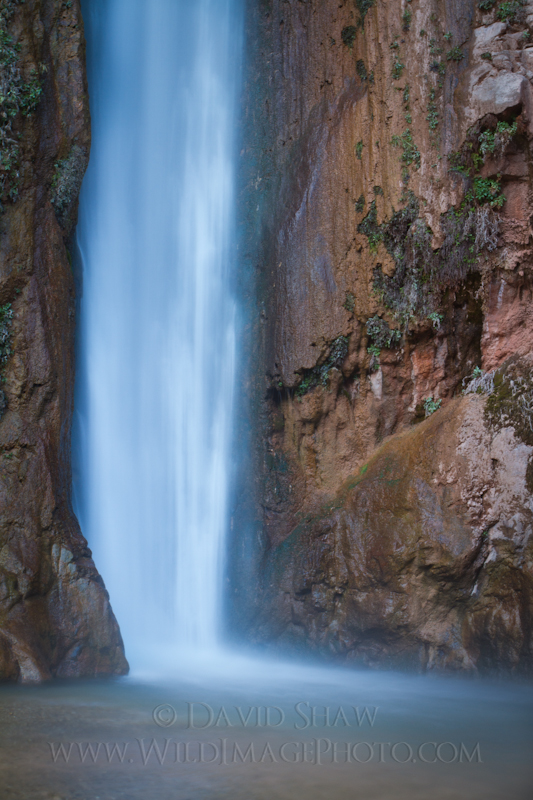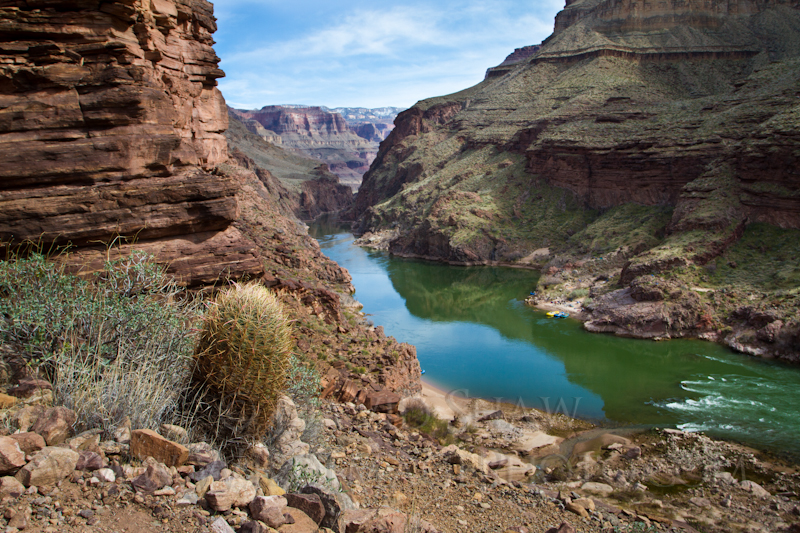(Colorado River and our camp across the river from Deer Creek Falls. Canon 7D, 17-40f4L @39mm, ISO100, f8.0, 2 seconds, tripod)
It seems ironic that water held such an important role in my recent trip to the deserts of the Grand Canyon. We floated our boats on the water, swam and bathed in it, while the surrounding walls and plateaus of the canyon were almost entirely deprived of it. From another perspective the importance and even abundance of water in our lives on the river was also entirely appropriate. When the Colorado Plateau rose slowly into the path of the river, some bazillions of years ago, it happened so slowly that rather than being pushed around by the geologically rising land, the river instead cut into it. One micron at a time, the water devoured the earth and created the mile-deep ditch we know as the Grand Canyon. The river was the knife, the land the bread, while the canyon is the crumbly, jagged cut of the too-dull knife.
Side canyons were born in much the same way, but unlike the main river, where the water tumbles in rapids, many of the side canyons involve water falls. These vary from small trickles of water down a cliff face to torrents gushing through hundreds of feet of space. Some were hidden high up almost inaccessible canyons, others plummeted straight into the river.
Falling water in the desert. I love the irony and juxtaposition. 
(Upper Deer Creek Falls, Deer Creek Canyon. Canon 7D, 17-40f4L @19mm, ISO100, f14, 0.3seconds, tripod)
(Deer Creek Falls, Detail. Canon 7D, 17-40f4L @39mm, ISO100, f8.0, 2 seconds, tripod)

